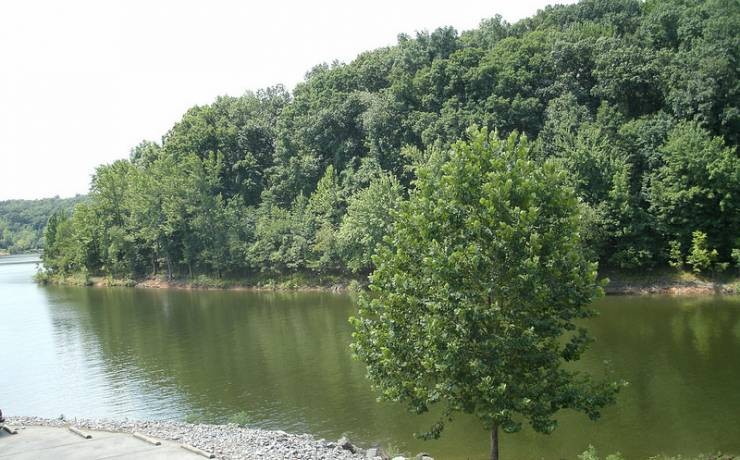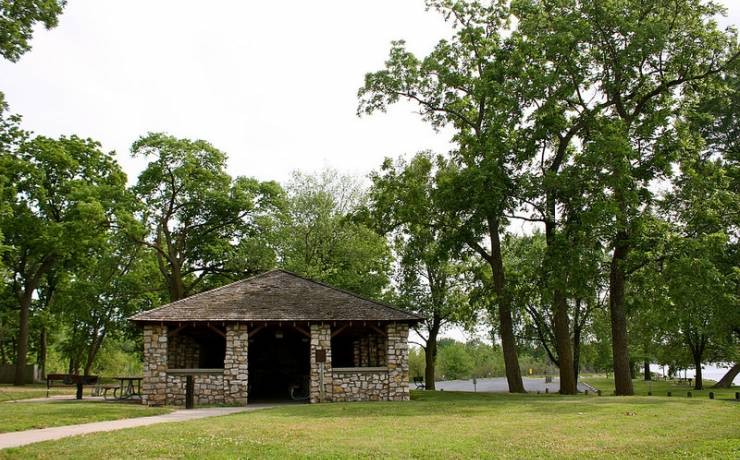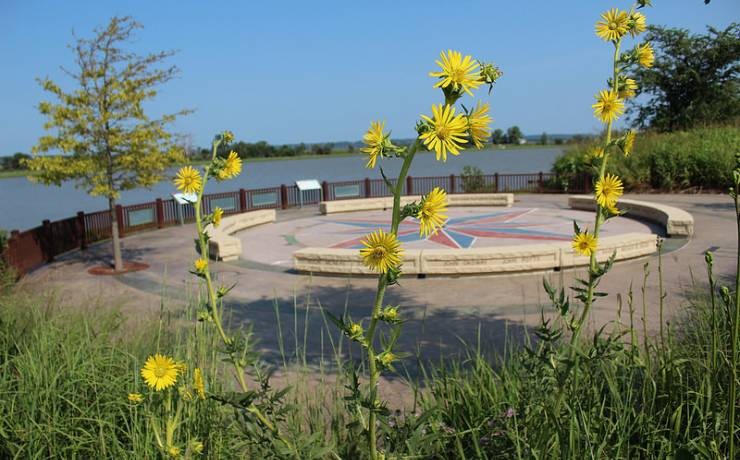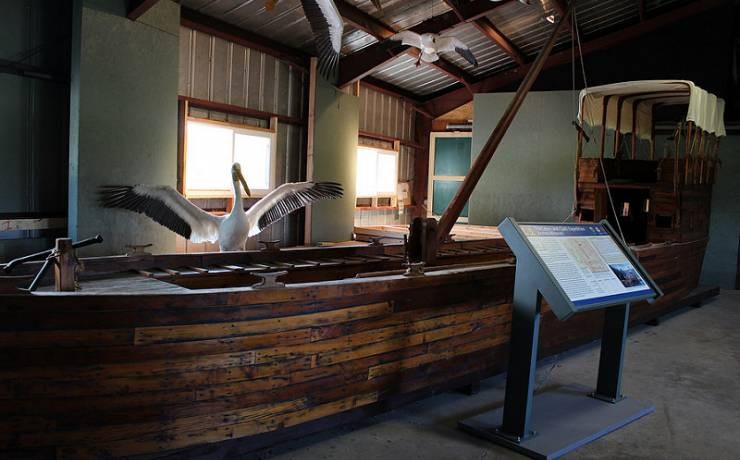Lewis and Clark State Park
Introduction
Text-to-speech Audio
The Lewis and Clark State Park is named after Meriwether Lewis and William Clark, who were explorers of the American West. Missouri officials purchased the land in 1934 and named it in honor of Lewis and Clark. The Civilian Conservation Corps designed the park in the 1930s and assisted in building a picnic shelter on park grounds. Due to Lewis and Clark's exploratory contributions to America and their founding of the park's lake in their journey, the lake's name was changed from the "Sugar Lake" to the "Lewis and Clark Lake". The Lewis and Clark State Park is one of the last parks alongside of Highway 99 that still maintains trees of ancient origins, such as red cedar trees.
Images
Mountainous view of park

Building found along park location

Compass rosette acting as a memoir of Lewis and Clark

Exhibit found along park grounds

Backstory and Context
Text-to-speech Audio
The Lewis and Clark State park is named after explorers Meriwether Lewis and William Clark. These men explored Western lands of America in 1804, using the Missouri River as their guide. Their expedition endured for twenty-eight months with around forty other explorers with the same adventurous mindset. It is documented that Lewis and Clark's team of explorers witnessed an abundance of wildlife, including "goslings" and buffalo.
Transformed later into the Lewis and Clark State Park, Missouri officials purchased land adjacent to the Lewis and Clark Lake in 1934. During this time period, the park's lake was entitled, "Sugar Lake", but it was later renamed as the "Lewis and Clark Lake", since they found it during their expedition. The park was designed by the Civilian Conservation Corps in the 1930s.
The Lewis and Clark State Park features many historical accounts and tourist attractions. For instance, the addition of the compass rosette acted as a memoir for Lewis and Clark's efforts of discovery. The park also hosts a Lewis and Clark Bicentennial Plaza, which was added to the park in 2006. Also, the park features a picnic shelter made from stone that was an architectural effort of the CCC. The Lewis and Clark State Park is one of the few parks along Highway 99 that still hosts older trees, such as red cedar trees.
The park is also home to a number of tourist amenities. These include 189 acres of land free for exploration of tourists that allow for a remembrance of Lewis and Clark's exploratory efforts. Guests to this park are given the opportunity to picnic, fish, and explore the playground. A lodge is located in the park, which is called the, "Lewis and Clark Environmental Learning Center". A campground is also available on park grounds, as well as many opportunities to take a tour of the park.
Sources
Lewis and Clark State Park. Missouri State Parks. Accessed March 31, 2017. https://mostateparks.com/park/lewis-and-clark-state-park.
The Lewis and Clark Expedition. YouTube. March 29, 2010. Accessed March 31, 2017. https://www.youtube.com/watch?v=D7vCQpqolXw.
Lewis and Clark State Park (Missouri). Wikipedia The Free Encyclopedia. Accessed March 31, 2017. https://en.wikipedia.org/wiki/Lewis_and_Clark_State_Park_(Missouri).
Lewis and Clark State Park. www.stateparks.com. Accessed March 31, 2017. http://www.stateparks.com/lewis_and_clark_state_park_in_missouri.html.
The Lewis and Clark Expedition. YouTube. March 29, 2010. Accessed March 31, 2017. https://www.youtube.com/watch?v=D7vCQpqolXw.
Lewis and Clark State Park (Missouri). Wikipedia The Free Encyclopedia. Accessed March 31, 2017. https://en.wikipedia.org/wiki/Lewis_and_Clark_State_Park_(Missouri).
Lewis and Clark State Park. www.stateparks.com. Accessed March 31, 2017. http://www.stateparks.com/lewis_and_clark_state_park_in_missouri.html.
